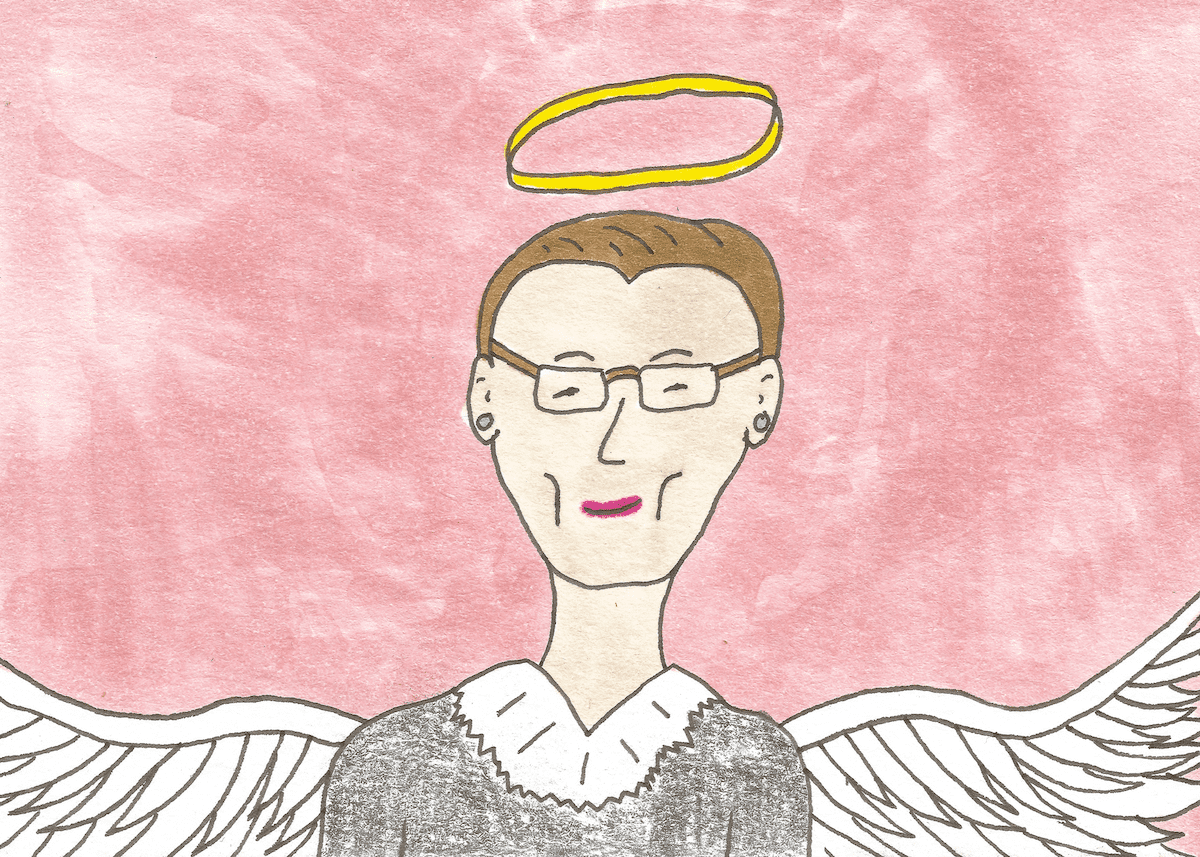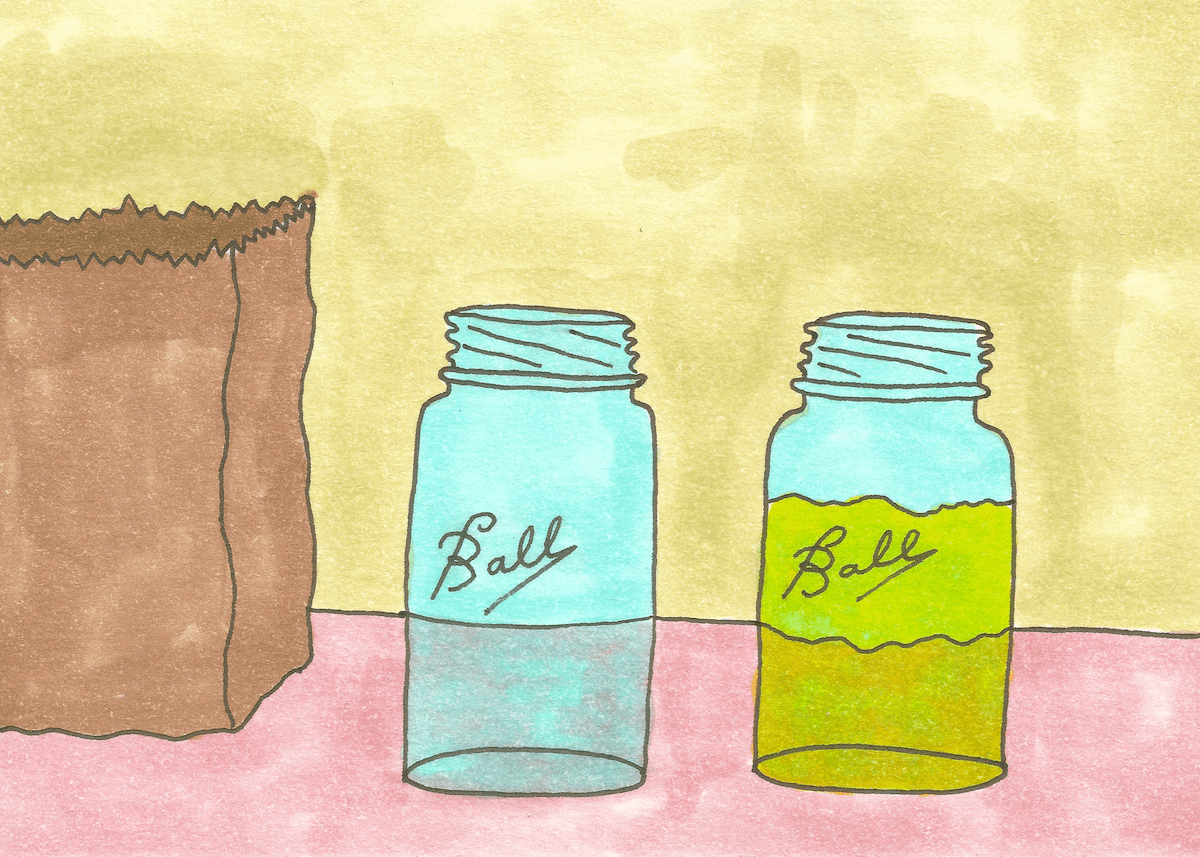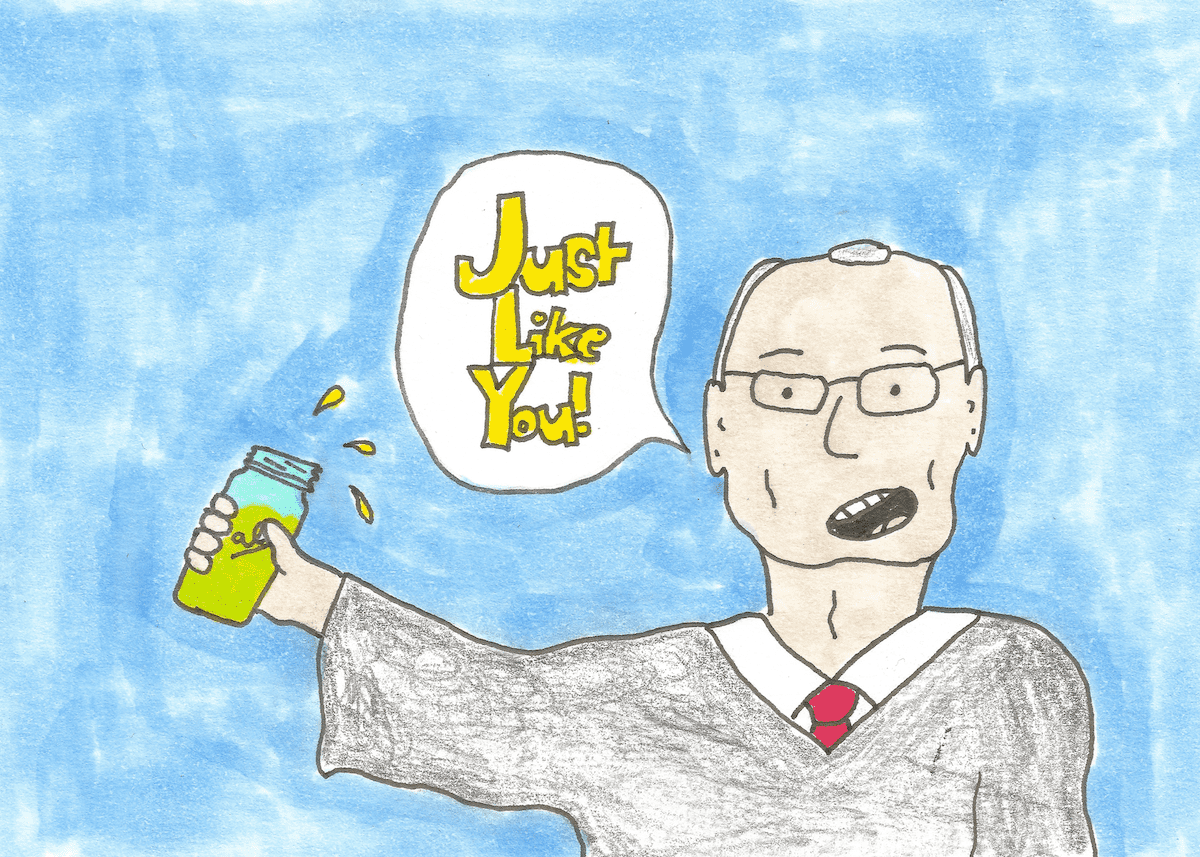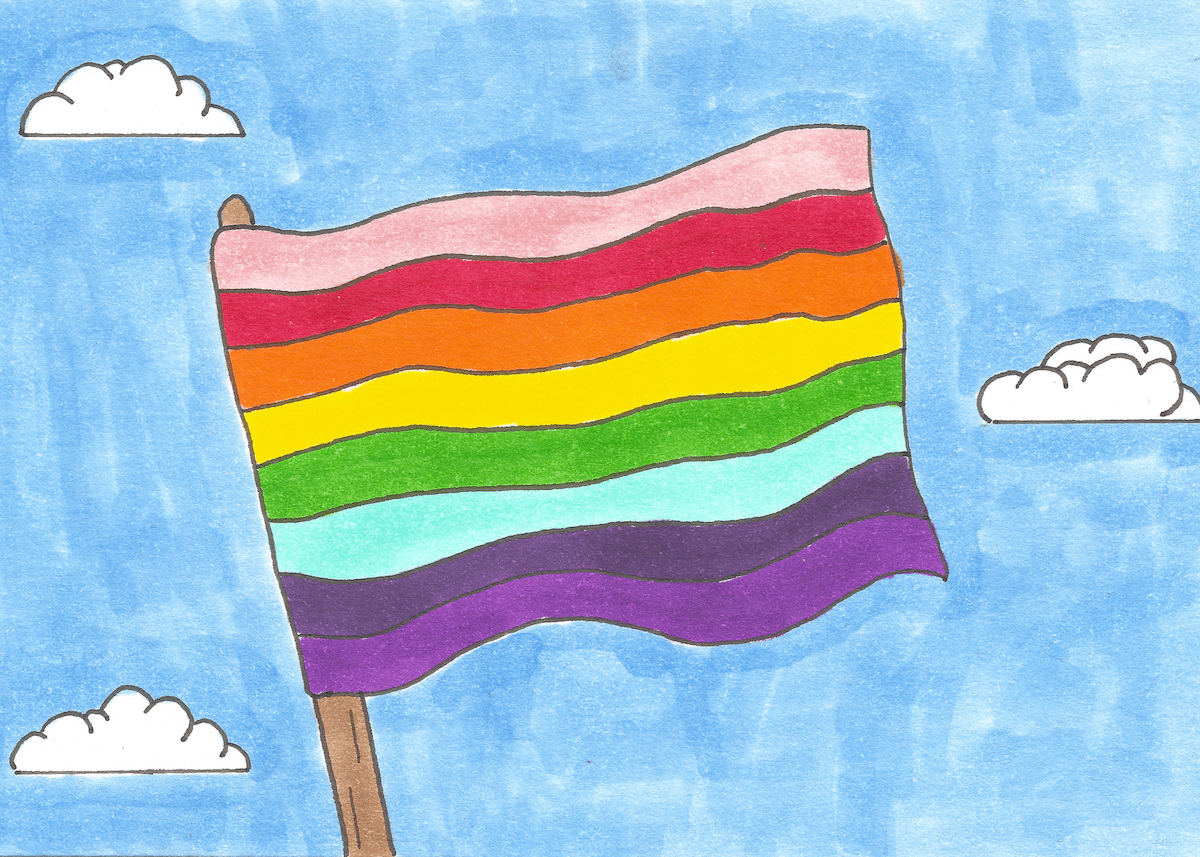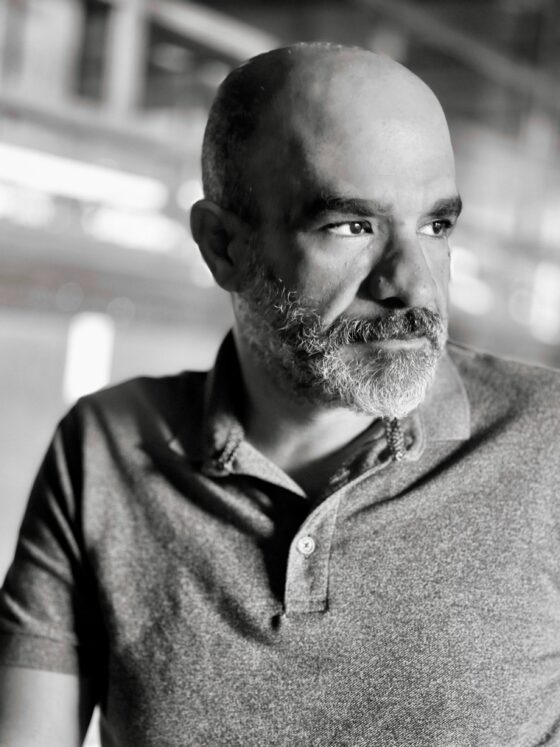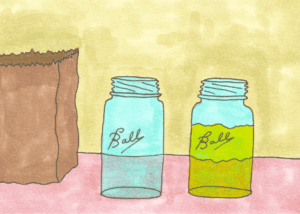
After Dan and I first had sex, curiosity set in. I liked his long, lean frame and matching dick. But all I knew about him was that he was an ordained minister studying to be a lawyer—a surprising combination for a gay man given both law and Christianity’s penchant for homophobia. I wondered: in what ways did he believe law and/or religion could help queers? Had they helped him? I pursued him for a few months and he was always kind with his responses, but he wouldn’t commit to meeting again. He never answered my questions about his life either.
Almost a year later, he texted me and said he wanted to come over. Surprised and excited, I wondered what sparked the urge. Had God spoken to him? Or, even better, had the law’s divine equivalent, The Notorious RBG? I liked to pretend she secretly controlled everything.
The urge was more bathhouse than Bible, though. Dan wanted to drink my piss. And he offered to return the favor, if I was interested.
Are you into that? he asked.
I didn’t know how to respond. All this time and piss had never come up. Or flowed out, as it were. How had he gone from preacher/lawyer to piss lover? Or, given how much Christianity and law had pissed on us, was that a natural trajectory?
I’ve never really thought about trying it, I replied.
My admission surprised me. As a sexuality researcher, it was sort of my job to know about sexual fetishes and to discuss them without judgment or shame. I’d always loved how the LGBTQ community positioned sex. We placed it at the center of our lives, reveling in kinks for pure physical pleasure as well as for activism that disrupted the conventions from which we were often barred. We gave ourselves permission to explore desire honestly, if not always publicly. And yet, I hadn’t fully participated. I bloomed late to sex, having wasted too many of my younger, cuter years pining over one man. There was a lot I hadn’t tried.
I told myself I’d do anything once, just to see if I liked it or not. That philosophy didn’t fly with everything though. New food, yes. Rollercoasters, yes. Marriage, no. Having kids, no. Piss play, I didn’t know.
I’m curious, what about it turns you on? I wrote Dan.
For me, it’s the ultimate form of being submissive, he responded. I like to be degraded so I can completely give up control.
It’s nice to let your guard down every once in a while, I replied.
He could have my piss, but I didn’t want his, I decided. A happy medium. As soon as I committed, a foreign, intoxicating mix of anger and power swelled inside me. I would be pissing on the Southern Baptist Christianity I was raised in that “loved the sinner and hated the sin.” I would be pissing on my home state of Georgia’s good ole’ Southern boy legal system that, in 2015, still upheld marriage bans and conversion therapy. I would be pissing on the institutions that Dan embodied but that often told us we weren’t good enough. I would degrade them.
About an hour later, Dan came in with a smile and a grocery sack. I gestured to the bedroom—I didn’t want to piss where I slept, but was unsure where else to go. Sitting down on my bed, Dan pulled out a couple of mason jars from his sack. He wanted to drink my piss from them, like Southern iced tea. I placed my dick in the jar and he grinned in anticipation.
Nothing happened.
“I drank a lot of water earlier,” I said, nervously.
“Let’s try the bathroom,” Dan responded.
He sat on the floor with his mason jars next to the toilet. I stood over the toilet, praying (yes, praying!) that the conditioning would work like it always had. But all I could manage to let out was a frustrated “Fuck!”
I turned on the faucet. Let’s try everything, I thought.
Still nothing.
Dan’s grin faded. My head lowered. I’d opened myself up only to not be able to perform. Now I was angry for a different reason—pissed I couldn’t piss. Dan then whipped out his long, beautiful dick, filled up a jar, and guzzled down his piss. I just stood there, physically and emotionally naked, not knowing what to do next. All I could manage was to shake my head in complete irritation with myself. Dan had poured me some proverbial tea, too. I wanted to be as radical as he was, to embrace that history while pissing on our oppressors. But there were just some things I couldn’t drink.
I’d never really allowed myself to be angry at the structures that had oppressed me. I’d survived them by being controlled, suppressing dissident feelings. Whenever someone hurled a slur at me or I’d see a headline heralding a discriminatory decision, I’d just go stone-faced, pretending none of it pertained to me—a version of acting straight. It was a hard habit to break. But the fantasy of retaliating against those structures, symbolically in the form of Dan drinking my piss, helped push that anger to the surface. And it lingered.
Just a few months after my questionable entrance into piss play/humiliation kink with Dan, one of the structures I’d so wanted to piss on once again deliberated the LGBTQ community’s worthiness. The Supreme Court took on Obergefell v. Hodges. Finally, the legal system looked like it would throw us a bone in the form of nationwide marriage equality.
When the decision came, striking down marriage bans across the country, I silently sent The Notorious RBG my gratitude for the badassery I imagined her displaying behind the scenes. But then I read the official court opinion, written by one of the other, non-RBG justices.
To move public opinion, and eventually the court, the mostly white, monied, cisgender lesbian and gay leadership, led by the Human Rights Campaign (HRC), endlessly showcased gay couples with children to drive a singular argument: we’re just like you. Advocates reasoned that the more commonality we could show with straight norms and expectations, the harder it would be to deny us crucial rights. I hated that argument; it went against our history. The Gay Liberation Front, which peaked immediately after 1969’s Stonewall riots, was a ragtag coalition of trans folks, bisexuals, drag queens, lesbians, and gay men of all colors influenced by, and often involved with, other movements of the day—the women’s rights movement, anti-war movement, and the Black Panther Party. They connected homophobia and transphobia to sexism, colonialism, and racism in order to disrupt sex, gender, and relationships norms, including monogamous marriage. At its core, the LGBTQ rights movement was founded not on becoming “just like you” but on challenging the idea that difference was bad.1
I also hated the “just like you” argument because it’s not true. I relied on my chosen family of friends more than I ever did my biological family—a common theme in the LGBTQ community. And, most of the time, I was a happy singleton. Queers tended to be more expansive in their relationship structures, validating chosen families and being single as much as monogamous marriage. If queers did couple up, they were often more egalitarian in their relationships than straight couples, and certainly more likely to practice open relationships or polyamory.2 I understood queers’ necessary use of the “just like you” argument, though, like when we called each other “dyke” or “faggot” to reclaim the words’ power. But when that “just like you” argument came from a straight white man—Justice Kennedy—it tore through me, just like when my mostly male classmates called me “faggot” in middle school. I didn’t know what the word meant, but I knew it was demeaning.
In his official court opinion that ruled in favor of Obergefell, Kennedy stated: “No union is more profound than marriage, for it embodies the highest ideals of love, fidelity, devotion, sacrifice, and family. In forming a marital union, two people become something greater than once they were.”
Along with the tax breaks and feeling wanted, maybe such “greatness” explained why around forty percent of marriages ended in divorce and why the majority of those divorced folks got remarried. Like Michael Phelps winning gold that first time at the Olympics, being great once was never enough. Three or four times was ideal.
Kennedy never acknowledged marriage’s fragility. For him, marriage was like granite, the freedom upon which other legal freedoms of family, expression, intimacy, and spirituality rest. Most importantly, marriage was supposed to free its participants mentally: “Marriage responds to the universal fear that a lonely person might call out only to find no one there. It offers the hope of companionship and understanding and assurance that while both still live there will be someone to care for the other.”
This was the straight white man’s experience of marriage. Straight women, whose domestic labor marriage had typically depended upon, often found Kennedy’s “assurance” elusive. Women were more likely to engage with marriage as transactional, emphasizing practicality over emotional investment. And they were far more likely to file for divorce than men, as well as more likely to be widowed. Marriage had not protected people of color either, particularly African Americans. Enslavement, mass incarcerations, and weaponized stereotypes tore nuclear families apart, which necessitated their reliance on extended kin, friends and neighbors equally, if not more, than on their spouses.3 4 Within the LGBTQ community, there would be similar patterns. Economically and socially, marriage would benefit me, a white, cisgender gay man who already had upward mobility. But the transgender community and queers of color would still be fighting, among other things, discrimination in the workplace and in acquiring home loans—two pivotal avenues to wealth that marriage exaggerates.5 6
Still, marriage, for better or for worse, was, as Kennedy stated, a “keystone to the nation’s social order.” Unmarried straight folks who’d filled out their annual taxes knew this. Single straight women who’d been to parties full of couples knew this. Single straight parents at a school “family day” knew this. But queers had experienced the lack of marriage differently, within shame and beyond it. Kennedy didn’t know this. And (gasp!) maybe RBG didn’t either.
Beyond noting how society once viewed homosexuality as “immoral” and an “illness,” Kennedy didn’t recognize further iterations of LGBTQ history or the movements that led to him having to make his case. Instead, he believed there was “no difference between same- and opposite-sex couples” in how they placed marriage at the center of such societal importance. He focused on painting the petitioners and, subsequently, the LGBTQ community as romantic, patriotic, private, monogamously committed, and family oriented—characteristics opponents of marriage equality claimed solely for themselves. When talking about James Obergefell and his now-deceased partner John Arthur, Kennedy stated that they “fell in love and started a life together, establishing a lasting, committed relation.” Then he pivoted to marriage as their point of commitment, adding “two years ago, [they] decided to commit to one another, resolving to marry before Arthur died.” After being together for twenty-one years, the couple had married in Maryland when Arthur was terminally ill only to have their home state of Ohio fight to not recognize Obergefell as Arthur’s spouse on his death certificate. That Kennedy focused on marriage as the point of both structural commitment and moral commitment degraded Obergefell and Arthur’s relationship history prior to marriage. It degraded the centuries of varying non state-sanctioned forms of commitment LGBTQ folks had enacted as well as the varying ways we’d been forced to cobble together legal protections. It had not been marriage that pushed these relationships to their devotional peaks, but rather the absence of state privilege and the abundance of societal shame. Lesbians and gay men who protected each others’ secrets at the height of the “lavender scare” in the 1950s knew this.7 Gay and bi men who cared for AIDS-stricken partners and friends during the 1980s and 1990s knew this. Trans women who created chosen families to stymie high rates of poverty and violence knew this.
Not only did Kennedy characterize us, without marriage, as freewheelers, he also characterized us as silent when he said “truthful declaration by same-sex couples of what was in their hearts had to remain unspoken.” Not speaking and not speaking in ways straight folks could hear us were two different things. I thought of the queer men in 1970s New York who created communal housing co-ops and a variety of polyamorous, platonic, and sexual relationships along with it. Or the “single” women who lived together for decades that many dismissed as “spinsters” or “old maids.” Queers maybe had been in the bushes, in bathroom stalls, in cars in dark parking lots, in hotel rooms, in bedrooms while spouses were away, at parties stealing looks only queers would recognize, but we were there, talking to each other, fucking each other, holding each other, loving each other, and seeing each other.
Kennedy could have just stuck to connecting the cases to important legal precedents, like Loving v. Virginia, which struck down bans on interracial marriage. Or, he could’ve honored the diversity of our relationships and our history, acknowledging that some of us wanted marriage and some of us didn’t, but that all of us should have access to it. Instead, he wrote like a Dom Daddy that “history and tradition guide and discipline…” In this landmark case, I felt Kennedy’s strong hand not freeing my queerness but stripping it. Absent were our creative modes of connection that had been born out of necessity and that, usually, exquisitely challenged social mores.
I didn’t want to go back to the days of closets, police raids, shock therapy, and sodomy laws. But I felt like we’d come out of the closet only to be shoved up a narrow set of stairs: Coupledom. Monogamy. Children. Monotonous sex. Unequal gender roles. White privilege. Marriage.
As soon as I finished reading the opinion, I needed alcohol and my queer tribe—my good friend Zaya and her girlfriend Sam. To get to them, I walked through the heart of Atlanta’s Midtown neighborhood, known for its community of gay men. It was a typical June day—bright with air so thick you’re sweating right when you walk out the door. As I got closer to the main intersection of Piedmont Avenue and 10th Street, I bumped into a guy I hooked up with occasionally—a great top. “Congratulations” he yelled with a grin. “Happy Marriage Equality!” He then pulled me in for a sticky hug, dragging me into a celebration I was wary of.
A few steps further and I saw what my lover was leaving. Dozens of queers––mostly white lesbians and gay men––had gathered at the intersection. Some waved Pride and HRC flags, which popped against the blue sky. Others held up signs, pushing them at passing cars that would honk in agreement. “Love Rules!” “Marriage Equality!” “Love is Love!” Honk! Honk! “We’re just like you,” they all seemed to say in one way or another. In front of everyone, at the corner, waved the largest handheld Pride flag I’d ever seen. I followed the rainbow, then the pole, all the way down to the slender hands. There was Dan. He looked up at the flag with the same wide smile as when he looked up at me, hungry for piss.
I loved seeing queers happy, because I knew that there was often a struggle for that happiness. Seeing Dan caught me off guard, though. Him holding that flag was a mirror I couldn’t ignore. To folks like Kennedy, Dan no doubt seemed like the poster boy for social legitimacy, upholding our national and Christian values. They’d looked at him and said, “He is so good, he should be able to get married.” But if Dan’s––nay, our––kinky joys were front and center of the “gay agenda,” marriage equality wouldn’t have happened. If the broader public really knew and saw us for who we were, piss and all, it wouldn’t have happened. My body tightened as the knee-jerk worry of being seen and outed flooded back. The anger and frustration I had felt toward Kennedy, toward our legal system, cooled into shame and fear—the shame of being queer and the fear of being hurt. To combat it all, that old survival instinct to be muted and stoic, to be “good” and perform straightness, crept in.
All queers, in some way, have scavenged straightness for scraps of dignity and, more importantly, so we wouldn’t die. In celebrating the ending of the decades-long fight for marriage equality, we were also doing what Kennedy wanted us to do, what the broader, straight public wanted us to do. We were being “good,” placing marriage at the center of our lives and eclipsing our past. But if being vulnerable was the path to real connection, understanding, and liberation, then our big win––and it was a win––was also a failure.
I’ve wondered my whole life what it would feel like to walk up a street being “bad” but feeling free, without shame. I’ve also wondered what it would feel like to see us, as a group, showing all of ourselves, not to parade, disrupt or fight, but just to be, without shame. Sadly, and as a testament to successful oppression, I couldn’t envision what all this would actually look like. But I thought, today, with a new right that was supposed to be liberating, I might get a taste. Instead, I saw our community’s old scars from decades of being policed. They were still fresh enough for us to hide ourselves, at least partly. I crossed the street, hoping Dan and the rest of my community wouldn’t see me. I turned my back on them, leaving them to drink whatever piss they wanted, be it their own or the legal system’s backhanded erasure of us.
Zaya, being the good bougie femme she is, picked the restaurant Empire State South for their wine list. It sat just a block up from the celebrations. And like most empires, it wasn’t interested in acknowledging that anything contrary had happened. The mostly straight patrons gathered and drank happily and openly like they’d always been able to do. Their kids played bocce and blew bubbles on AstroTurf lined with lawn chairs. In other words, they performed marriage as Justice Kennedy envisioned it, complete with manicured illusions of ease and togetherness.
I found my friends, hugged them tight, and sat down. Sam, being the good Southern butch she is, drew her wallet like a sword and immediately went to the bar to protect us with libations: Chardonnay for Zaya, a glass of riesling for me, and a whiskey and Coke for herself. I couldn’t take my eyes off the long strand of pearls draped around Zaya’s brown skin. Pearls were a symbol of the plight of so many women in the 1950s, 60s, and beyond, who looked happy while being shackled by marriage to domestic duties. But on Zaya they hung loose, free. They only had to look and feel good for her.
Drinks in hand, we looked around at each other.
“So, what should we toast to?” I asked.
“To state legitimacy,” Zaya said, as we raised our glasses. “And to those who suffered violently to make it happen.” Marriage, despite its flaws, would hopefully give us some protection. And so many had fought hard for it. Still, it felt like the toast you give someone at their funeral. A toast to honor a life full of challenge and audacity that had culminated in its inevitable passing. I put Zaya’s pearls in my mouth in mock sexiness. She laughed high and loud, wonderfully and easily cutting through the outside chatter. We were a little obnoxious and, in our own small way, we were challenging the propriety of the space we were in.
Then, Sam made a snide remark about Zaya, someday, being her wife.
“I’d rather be your whore than your wife,” Zaya retorted.
We all laughed, raised our glasses again, and took a sip.
***
Rumpus original art by Zach Swisher.
***
1. Roderick A. Ferguson, One-Dimensional Queer (Cambridge: Polity Press, 2019).↩
2. Letitia Ann Peplau and Adam Fingerhut, “The Close Relationships of Lesbians and Gay Men,” Annual Review of Psychology 58, no. 1 (Feb. 2007): 405-424.↩
3. Patricia Hill Collins, Black Feminist Thought (New York: Routledge, 2000).↩
4. Stephanie Coontz, The Way We Never Were: American Families and the Nostalgia Trap (New York: Basic Books, 2016 [1992]).↩
5. Marlon M. Bailey, Priya Kandaswamy and Mattie Udora Richardson, “Is Gay Marriage Racist? A Conversation with Marlon M. Bailey, Priya Kandaswamy and Mattie Udora Richardson.” New College of California, April 2004. https://collectiveliberation.org/wp-content/uploads/2013/01/Bailey_Kandaswamy_Richardson_Is_Gay-Marriage_Racist.pdf↩
6. Christopher E. Herbert, Daniel T. McCue, and Rocio Sanchez-Moyano, “Is Homeownership Still an Effective Means of Building Wealth for Low-Income and Minority Households?” in Homeownership Built to Last: Balancing Access, Affordability, and Risk After the Housing Crisis, ed. Eric S. Belsky, Christopher E. Herbert, and Jennifer H. Molinsky (Cambridge: Brookings Institution Press, 2014).↩
7. David K. Johnson, The Lavender Scare: The Cold War Persecution of Gays and Lesbians in the Federal Government (Chicago: University of Chicago Press, 2004)↩

